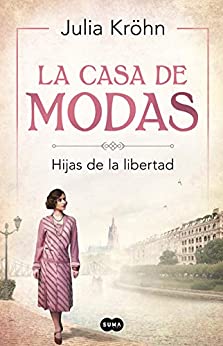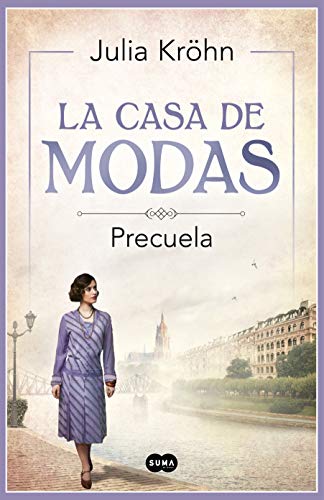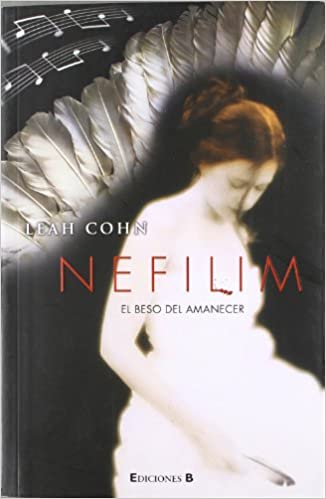Julia Krohn is one of the new voices in the historical-romantic intimacy (what a subgenre that I just invented) through which great current authors such as Maria Dueñas, Anne jacobs o Sarah lark.
But the happy encounter of the author with this literary space shared with other greats has not been something found the first time. Not at least if you look at the endless list of pseudonyms adopted along the way: Leah Cohn, Carla Federico, Sophia Cronberg, Katharina Till or Kiera Brennan. Although there is no need to worry about the name dance, since so far only works signed as Kröhn or Leah Cohn have reached Spain.
The point is that in her latest reinvention, this Austrian writer has found a very conducive creative environment to develop as a bestselling writer. And it is that in that virtuous balance between the historical, the emotional and the descriptive there is a great vein of readers who enjoy each new setting towards an extreme empathy of the closest life.
Top 3 recommended novels by Julia Kröhn
The fashion house
We enter a fully enjoyable plot, located between plot knots back and forth in the middle of the twentieth century. In other words, a kind of synthesized saga that can lead to prequels that extend over untold moments. Only in this novel the essential is rescued in principle, the enigmatic becoming of a time that links tthree women of the same family from 1920 to the beginning of the seventies.
A lot of time to weave these knots together, many possibilities for Fanny, Lisbeth and Rieke to face their destinies, written with that magical procedure that sometimes he scripts as if someone were really in charge of making sense of everything. Only that the protagonists know little about the threads that unite them beyond their natural family tree. They live their dedication to fashion at all times. And there the author takes the opportunity to introduce us with skillful brushstrokes the uses and customs that jump beyond fashion to social and moral currents. The grace lies in that, in the excuse of fashions, fleeting but always back and forth, like the lives, the family secrets and the pangs of that silver thread bent on mending stocks.
Looking at momentous moments in their lives, the three women will face that moment of decision that changes everything. Only, being that he could be that superior scriptwriter who could make sense of everything, perhaps some clues for seasoned observers (like a simple red shawl) can make their decisions based on the best option so that everything ends up marrying the wonderful cadence of a symphony that runs through much of the twentieth century, between its lights and shadows.

The Fashion House (prequel)
Obvious. Faced with a story that spans so many years with its jumps and changes of scenery that can never fully show the possible intrahistories, it can always be interesting to trump those jewels for lovers of the initial plot. And also, all free, to hook all kinds of readers to the cause of this fashion house that points to other continuations.
In this ebook-only prequel we travel to Frankfurt in 1848. The wedding dress that the daughter of the venerable Lohmann family plans to marry, one of the most respected in the city, is a scandal. It is white from top to bottom, and in such an outfit so far only queens have walked down the aisle. An even bigger scandal, however, is that Henriette, who works as a "seamstress" for the Lohmanns and has made the dress, has secretly tried it on to see how it suits her.
And before he can take it off, the revolutionary Jan Hinrichs lies on the kitchen table of the house, bathed in blood after having managed to survive the fight on the barricades. Then events precipitate...
Nephilim
Signed as Leah Cohn, if you started reading the plot without knowing about the pseudonym, you would have a hard time identifying the plot with anything similar to what was written about the universe of the fashion house. Because as the title already indicates, we approach the shadow of the legendary nephilim, children of disinherited angels and women. Only the author gives it her particular touch by incorporating Sophie as the mother of a nephilim as the protagonist in parallel.
It was all due to a slip of love. Then came the consequences. And perhaps the abandonment of Nathanael, father of the conceived creature, is not something capricious but rather the regret of having given life to a new individual like him, punished to travel through the world endlessly, on the edge of eternity. Only that the eternal, without an achievable end, can be a pitiful path towards nothingness. The arrival of Aurora, the daughter, can give meaning to everything.


